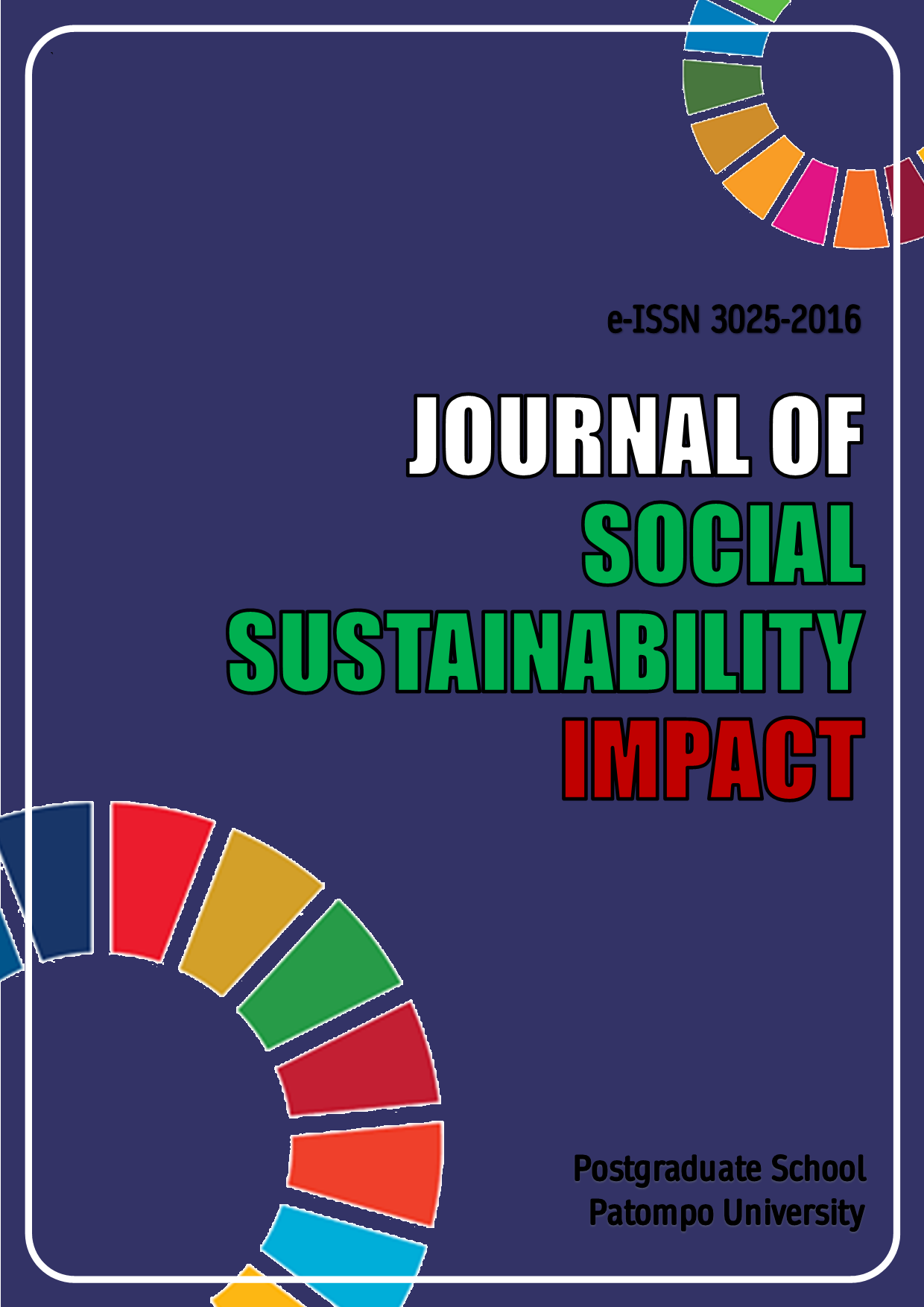Enhancing Teacher Creativity and Educational Quality at Elementary Schools: A Principal Strategic Approach
Keywords:
good co-operation, school principals, strategies employed, teacher creativityAbstract
This research aims to investigate the strategies employed by school principals to enhance teacher creativity and identify the supporting factors and barriers faced by school principals in fostering teacher creativity. The research methodology utilized is field research with a qualitative descriptive approach. Data was collected through interviews, observations, and documentation. The findings of this study reveal that the strategies employed by the school principal of Taraweang Kabba Elementary School, nestled in the Minasate'ne District of Pangkep Regency, within the picturesque landscapes of South Sulawesi Province to enhance teacher creativity include holding monthly staff meetings evaluating teacher performance, providing teacher training, participating in subject teacher working groups (MGMP), attending seminars and workshops on IT-based learning, assisting teachers in problem-solving during teaching, fostering communication, setting examples, and directing teachers to use various teaching methods such as different teaching styles, developing instructional media, designing teaching materials, fostering teacher-student interactions, and developing teaching methods. Supporting factors and barriers school principals face in enhancing teacher creativity are identified. Supporting factors include adequate educational backgrounds with bachelor's and master's degrees, teacher response to innovation, strong motivation, good co-operation, adequate facilities, comfortable working environments, and strong committee support. Meanwhile, barriers include differing attitudes, backgrounds, and social statuses among teachers, a shortage of permanent teacher personnel, inadequate relationships between the school and parents, travel distance for official duties, respect towards older teachers, limited school electricity supply, teachers' lack of computer operational skills, and underutilization of existing IT media. Through understanding these factors, school principals can effectively implement strategies to enhance teacher creativity and address barriers to create a conducive learning environment.
References
Alamsyah, Alamsyah. 2017. “Strategi Kepala Sekolah Dalam Meningkatkan Kreativitas Guru Di MAN 1 Mukomuko Bengkulu.”
de Araujo, Lizio Marcel, Sidik Priadana, Vip Paramarta, and Denok Sunarsi. 2021. “Digital Leadership in Business Organizations.” International Journal of Educational Administration, Management, and Leadership 45–56.
Creswell, John W., and Vicki L. Plano Clark. 2018. Designing and Conducting Mixed Methods Research. 3rd ed. Beverly Hills, CA: SAGE Publications.
Darling-Hammond, Linda, Dion Burns, Carol Campbell, A. Lin Goodwin, Karen Hammerness, Ee-Ling Low, Ann McIntyre, Mistilina Sato, and Ken Zeichner. 2017. Empowered Educators: How High-Performing Systems Shape Teaching Quality around the World. John Wiley & Sons.
Fitria, Fitria, Ruslan Ruslan, and Muhammad Yusuf Mappeasse. 2021. “Application of E-Learning Based on Enriched Virtual Model in the Subject Database.” International Journal of Environment, Engineering and Education 3(1):32–40. doi: 10.55151/ijeedu.v3i1.47.
Franco, Mario. 2020. Digital Leadership: A New Leadership Style for the 21st Century. BoD–Books on Demand.
Fry, Louis W., and Melissa Sadler Nisiewicz. 2013. Maximizing the Triple Bottom Line through Spiritual Leadership. Stanford University Press.
Fullan, Michael. 2015. The New Meaning of Educational Change. Teachers college press.
Gall, Meredith Damien, Walter R. Borg, and Joyce P. Gall. 1996. Educational Research: An Introduction. Longman Publishing.
Hattie, John. 2012. Visible Learning for Teachers: Maximizing Impact on Learning. Routledge.
Idkhan, A. Muhammad, and Muhammad Maruf Idris. 2021. “Dimensions of Students Learning Styles at The University with The Kolb Learning Model.” International Journal of Environment, Engineering & Education 3(2):75–82.
Ismail, Andy, Taofik Hidajat, Yenny Maya Dora, Fauzan Eka Prasatia, and Astrid Pranadani. 2023. Leading the Digital Transformation: Evidence from Indonesia. Asadel Publisher.
Kayyali, Mustafa. 2024. “Career Development in Higher Education: Best Practices and Innovations.” Pp. 1–19 in Advancing Student Employability Through Higher Education. IGI Global.
Leithwood, Kenneth, and Doris Jantzi. 2008. “Linking Leadership to Student Learning: The Contributions of Leader Efficacy.” Educational Administration Quarterly 44(4):496–528.
Miles, Matthew B., and A. Michael Huberman. 1994. Qualitative Data Analysis: An Expanded Sourcebook. sage.
Mishra, Punya, and Matthew J. Koehler. 2006. “Technological Pedagogical Content Knowledge: A Framework for Teacher Knowledge.” Teachers College Record 108(6):1017–54.
Moleong, Lexy J. 2007. Qualitative Research Methodology. Bandung: PT Remaja Rosdakarya.
Mulyasa, Enco. 2004. “Manajemen Berbasis Sekolah: Konsep, Strategi Dan Implementasi.”
Natsir, Taufiq, A. Ramli Rasyid, and Samuel Akpan Bassey. 2023. “The SAVI Learning Model and the 21st Century Skills: Developing Critical Thinking, Collaboration, and Creativity in Students Vocational High School.” International Journal of Environment, Engineering and Education 5(1):27–34. doi: 10.55151/ijeedu.v5i1.96.
Padalia, Andi, and Taufiq Natsir. 2022. “End-User Computing Satisfaction (EUCS) Model: Implementation of Learning Management System (LMS) on Students Satisfaction at Universities.” International Journal of Environment, Engineering and Education 4(3):100–107. doi: 10.55151/ijeedu.v4i3.72.
Rachmaniar, Rachmaniar, Muhammad Yahya, and Mustari Lamada. 2021. “Evaluation of Learning through Work Practices Industry Program at University with the CIPP Model Approach.” International Journal of Environment, Engineering & Education 3(2):59–68.
Scheurich, James Joseph, and Linda Skrla. 2003. Leadership for Equity and Excellence: Creating High-Achievement Classrooms, Schools, and Districts. Corwin Press.
Schleicher, Andreas. 2019. “PISA 2018: Insights and Interpretations.” Oecd Publishing.
Suarlin, Suarlin, and Muhammad Ichsan Ali. 2020. “The Effect of Environmental Education Learning on Students at University.” International Journal of Environment, Engineering and Education 2(3):49–56. doi: 10.55151/ijeedu.v2i3.39.
Sugiyono. 2012. Statistika Untuk Penelitian. Bandung: Alfabeta.
Taylor, Steven J., Robert Bogdan, and Marjorie DeVault. 2015. Introduction to Qualitative Research Methods: A Guidebook and Resource. New York, United States: John Wiley & Sons.
UNESCO, UNDP. 2015. “Incheon Declaration and Framework for Action for the Implementation of Sustainable Development Goal 4.”
Wahrini, Retyana, Nuridayanti Nuridayanti, and Elfira Makmur. 2019. “The Role of Teachers in Awareness of Occupational Safety and Health (OSH) Vocational School Students.” International Journal of Environment, Engineering and Education 1(3):67–74. doi: 10.55151/ijeedu.v1i3.18.
Downloads
Published
How to Cite
Issue
Section
License

This work is licensed under a Creative Commons Attribution-ShareAlike 4.0 International License.




